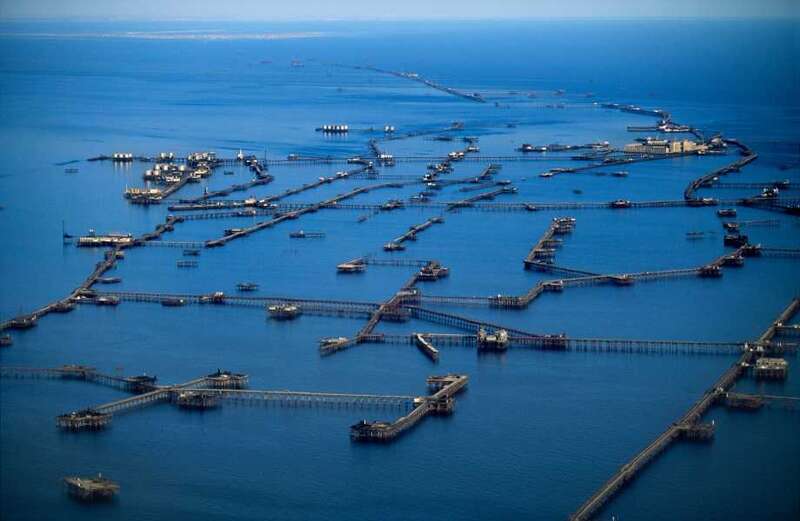HIDDEN away from the outside world sits a Soviet-era Atlantis counting its days before it collapses into the sea.
Sitting in the Caspian Sea off the coast of Azerbaijan, Neft Dashlari - 'Oil Rocks' - is a sprawling network of artificial islands that was built by Joseph Stalin to meet USSR's growing oil demands.




Said to be the biggest and oldest offshore oil mining rig in the world, the crusty mega site stands on pillars mounted on the carcasses of sunken ships.
The artificial archipelago was built In 1949 as part of a Stalin-led five-year plan after Soviet engineers found huge stocks of black gold thousands of feet beneath the sea.
What began as a single path on the sea became a network of artificial islands, connected in 1952 by a trestle bridge structure built with metal pipes and concrete bridges.
 Putin accused of surrounding himself with same 'actors' at series of events
Putin accused of surrounding himself with same 'actors' at series of events
Some 200 miles of roads crisscross between the crumbling and rusting site - which is essentially a floating city.
Large-scale construction soon began on the settlement in 1958 to exploit oil deposits located beneath the Caspian Sea.
Within just two years, all the necessary infrastructure including landing docks, drilling platforms and oil tanks was built and extraction started.
Everyone rushed to feel it [black gold], to put their hands in it and smear it all over their arms and faces, hugging each other and shouting for joy
Seyyad Ibrahimov
A surprising account of the initial events was found online, with a former engineer Seyyad Ibrahimov describing how it felt digging out the first batch of oil for the Soviet Union.
He wrote: "Nobody could sleep that night… There, off the coast of Azerbaijan, would mark the first time oil had been recovered from depths in the sea," he said.
"Oil was struck at a depth of 1,100 meters beneath the Caspian. And when that black, thick fountain started to pour forth, and no one could contain their excitement and exuberance.
"Everyone rushed to feel it, to put their hands in it and smear it all over their arms and faces, hugging each other and shouting for joy."
The coming years saw robust construction on the "floating city" for the workers with lavish attractions built including a cinema, soccer field, lemonade factory, and a tree-dotted park.
Multi-level hostels, power plants, and even cultural centres were built to form a utopian world.
 Russians wrote 'Happy New Year' on drone sent crashing into playground
Russians wrote 'Happy New Year' on drone sent crashing into playground
At its peak, the complex structure employed around 5,000 workers who lived in the giant rig digging out oil from the depths of the ocean.
In the first 60 years of its existence, the Soviet-style industrial city produced more than 170million tons of oil.
But with the slow decline of the Soviet Union's economy, the mega oil rig began to fall into disrepair.
Buildings and other installations soon began to fall apart, with a flood worsening the state of the once-hyped industrial settlement.
By 2012, only some 20 miles of roadways were left usable - the rest had either collapsed into the sea or had become too rusty to be used, German publication Der Spiegel reports.
It is feared that the crumbling structure is slowly sinking into the sea after bearing the wraith of time.
But dismantling the complex structure would be more expensive than keeping it going, which is why Neft Dashlari is still home to some 2500 people today.
Experts claim about 30million tons of oil resources were still extractable - and the site can be functional for about 10 more years.
But with collapsing structures and rust-stricken instalments painting the picture, the future of the oldest offshore oil rig in the world is covered with bleak uncertainty.




































